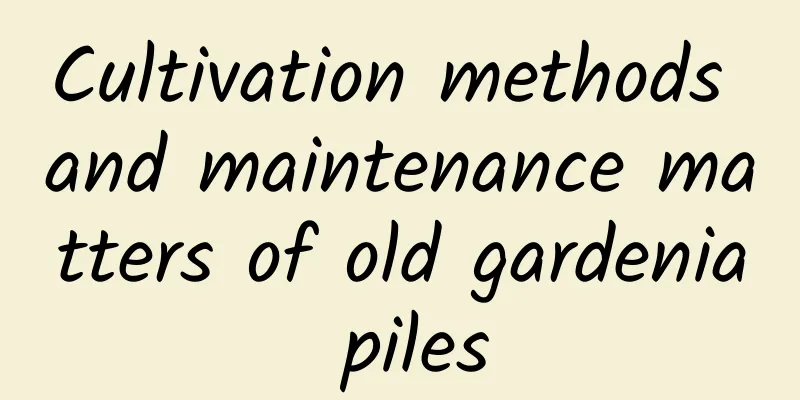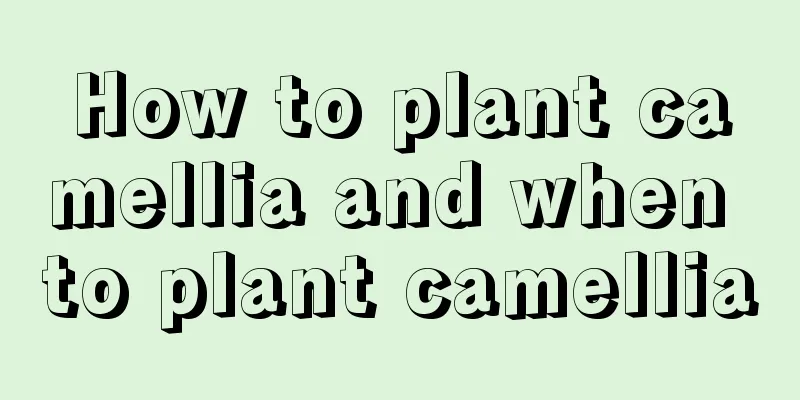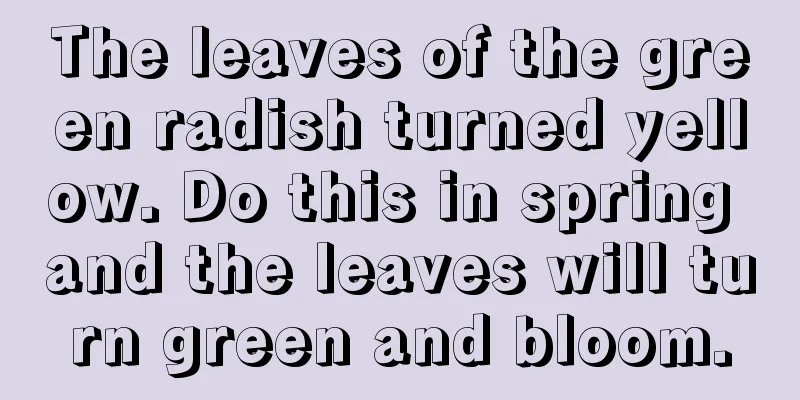Cultivation methods and maintenance matters of old gardenia piles

How to grow gardenia into an old pile1. Select seedlings: If you want the gardenia to grow into old piles, you must first select good seedlings. Healthy and strong seedlings can grow well, so don’t be tempted to buy those bad seedlings at a low price, otherwise problems will easily arise during the maintenance process, and it will be difficult to grow it into old piles. It is best to choose larger seedlings that take a longer time to maintain. 2. Soil: Gardenias need fertile soil, and leaf mold is the best choice, which is very suitable for gardenias to absorb nutrients. If it is ordinary soil, the nutrients are insufficient, which will affect the growth of gardenias and make it difficult to grow into old piles. 3. Fertilization: If you do not fertilize gardenia, it will lead to insufficient nutrients supplied to the plant, so you must supplement fertilizer during the growing period. You can use fermented fertilizer or cake fertilizer. You can apply fermented fertilizer and potassium dihydrogen phosphate. It will be especially abundant when it blooms and the smell is particularly fragrant. 4. Pruning: If you want to grow an old stump, pruning and shaping is naturally indispensable. Cut off some of the dense and unsightly branches, leaving only one or two main trunks. Nutrients are supplied to the main trunks. Only when the main trunks are strong enough can they grow faster, which can promote it to grow into a beautiful old stump. Cultivation method of old gardenia pile1. Remove from the basin First of all, if you want to use gardenia to make old bonsai, you should choose a healthy gardenia and use sterilized scissors to cut off the excess branches and leaves of this gardenia. After pruning, remove the gardenia from the original flowerpot and gently shake off the soil carried by the roots. When doing this step, we need to be careful not to damage the roots of the gardenia. 2. Root washing Then gently rinse the roots with running water. During the rinsing process, carefully observe whether the roots are rotten or diseased. If so, you can cut them off. In addition, the roots with diseases and insect pests should be trimmed in time to retain the fibrous roots and fine roots. 3. Disinfection and sterilization After pruning the roots, you can soak them in potassium permanganate solution for about 2-3 hours. We need to prepare some slightly acidic sandy red soil, humus soil, and coarse sand to prepare the potting soil. 4. Transplanting If conditions permit, you can also use Akadama mixed with some garden soil, and place the trimmed plants in the flowerpots. Not too deep so that the roots are not buried. Then water them thoroughly. At this time, do not rush to expose them to sunlight. You can place them in a cool and ventilated place to allow them to grow slowly. 5. Shaping The last step is shaping after flowering. The gardenia bonsai can be pruned in time to make it into different shapes such as straight trunk, curved trunk, slanted trunk, cliff style, etc. After flowering or during the dormant period, we can use different methods to shape the flowers. Pruning old gardeniaDuring the maintenance of old gardenia stumps, the branches and buds growing from the rootstock should be wiped off at any time to avoid competing for nutrients and affecting the growth of the scion. Because the branches of Gardenia are numerous and dense, and grow horizontally, the plant has a compact shape and can be easily shaped with a little pruning and binding. The clustered branches that affect the tree shape should be pruned at any time to remove unnecessary buds. Its shape can be determined according to the shape of the stake and the modeling rules of bonsai. It can be made into straight trunk, curved trunk, inclined trunk type, or processed into exposed root type, cliff type or stone attached type. Through artistic processing, it can achieve a beautiful bonsai that combines viewing of flowers, leaves, trunk, roots and shape. It is refreshing and enjoyable to appreciate. Precautions for the maintenance of old gardenia piles1. Gardenia does not like a growing environment with light, especially in the autumn heat. When caring for it, it must not be placed in a light environment. At noon, it must be properly shaded. It can be placed in a place with scattered light indoors, and ventilation must be ensured. 2. Gardenia likes a humid environment. During the high temperatures in summer, water it once in the morning and evening. If the soil in the pot is denser, water it once every 1-2 days. Spray some clean water regularly to keep the air moist. For bonsai gardenias, repot and change the soil every 2-3 years. Root pruning and shaping can also be done when repotting. 3. Gardenia likes fertilizer, so we can apply decomposed cake fertilizer water once every two weeks or so. When the temperature is above 35 degrees Celsius, stop fertilizing to avoid burning the roots. Picture appreciation of old gardenia pile |
<<: Where do mushroom seeds come from?
>>: How to divide spider plants
Recommend
Which month is best for transplanting sweet potato seedlings?
The stems and vines of sweet potato seedlings hav...
How to water azalea
Tips for watering azalea Azalea is a plant of the...
How to fertilize Clivia and what fertilizer to use to make it bloom
1. Fertilization method 1. Base fertilizer: When ...
Why do gardenias drop their buds?
1. Being exposed to the sun Reason: When the weat...
What to do if the leaves of Shuangxi vine fall off
Solve by cause Lack of water: When there is sever...
Feed the flowers some golden water, and they will be like taking stimulants, and they will bloom into big flower balls during the New Year!
Bury an egg yolk and flower buds will pop up! Dur...
In which month can dragon fruit be propagated by cuttings? Do I need to water it after propagation?
1. Cutting time Pitaya cuttings are a common meth...
How much is the average yield of ginger per mu? How much is the profit of planting one mu of ginger?
Ginger yield per mu The yield of ginger per mu is...
Does Oxalis prefer shade or sun?
Does Oxalis prefer shade or sun? Purple-leaf Oxal...
How often should I change the water for water lilies?
Water lily is a perennial aquatic herb belonging ...
How to grow strawberries
1. Prepare the soil When planting strawberries, y...
How to grow watermelon to get high yield?
Watermelon is a popular summer fruit for its swee...
How to grow beets
1. Maintenance methods 1. Temperature: Beet prefe...
Sunflower planting process record
1. Choose good varieties There are many varieties...
How to prune the roots of Clivia
1. Clear the soil First, when repairing its roots...









